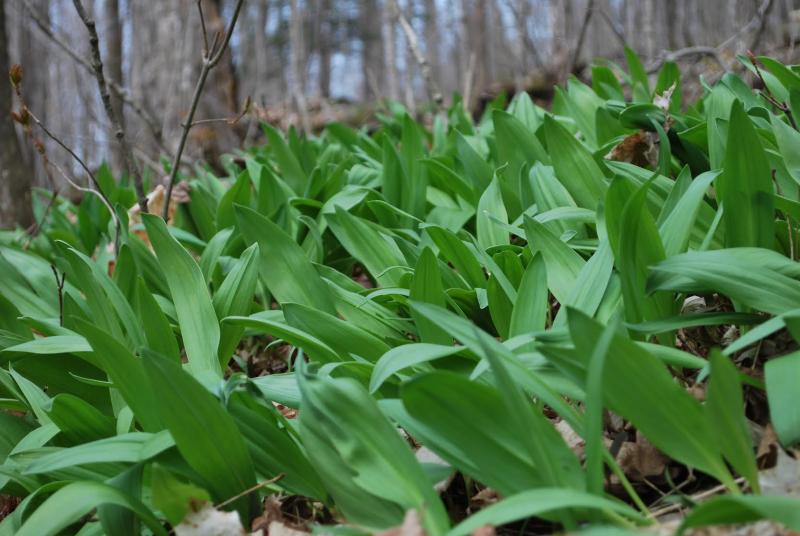Wild foods chef on three edibles you can forage for now
THORNDIKE — When most of us go out for a walk on a mild spring day in Midcoast Maine, we only see the obvious: blooming apple trees, greening trees and flowers poking up. When Chef Frank Giglio goes out, he’s looking for what’s going to end up on his plate later that day.
Giglio, the featured chef in Dr. Alejandro Junger’s best-selling cookbook, Clean Eats, and a resident of Thorndike, where he runs Three Lily Farm, is all about foraging for wild edibles as a way to supplement one’s diet.
“There’s a lot of variety in Maine that people can be looking for,” he said.
In a talk co-sponsored by the Belfast Co-op, on May 28 at the Belfast Free Library, he’s going to show people what they can harvest year round, sometimes in their own back yards. “I’ll give people a four-season tour of wild, acceptable foods that can be found in Maine, not only on the land, but also in the water,” he said.
“It’ll be sort of a cooking class/talk,” he said, but because it’s a library, the cooking part will be very much on a small scale.”
Three wild edible foods he is picking now and people can be foraging for themselves are: nettles, spruce tips and ramps.
“This morning, I just harvested a bunch of spruce tips and am making a spruce tip mead, a honey wine” he said. “And I’ll also do a honey infusion with spruce tips and a vinegar extraction with natural organic apple cider vinegar from Sewall’s Orchard.”
Little known fact: spruce tips are very high in vitamin C — as much as an orange.
He’s also been collecting wild leeks, also known as ramps. “If all you had was a storage of garlic and onions in the cellar and that was gone,” he said, referring to another era, “right now, people would be looking for these leafy greens and a substitute for garlic.”
Chock full of vitamins and minerals, stinging nettles are a third spring favorite of Giglio. These innocuous plants can be found in woodlands, thickets, along rivers and along partially shaded trails. Giglio makes nettle butter out of them, as well as nettle gnocci and even a supplement to meatballs.
Giglio, who grew up in Connecticut, went to culinary school, then worked in restaurants all over the country before ending up in Maine with his wife, Camille, in 2012. Prior to living in Maine, he made the choice to be a vegan, but wasn’t getting all of the nutrients he needed from that particular diet and decided to do a one-month food challenge.
“That was my first introduction to foraging as a way of life,” he said. “The key is to get the maximum amount of nutrition from a plant source at its peak.”
Through his farm and website, he and his wife run online courses on foraging and fermenting, as well as cooking courses and one-off events. The farm’s name, Three Lily Farm, refers to the fact that his last name translates to “lily.” Along with his wife and their toddler son, Wilder, that makes three lilies. The website also serves as an educational resource on recipes, gardening, homesteading and off-grid living.
For those who are interested in learning how to forage in Maine on their own, Giglio highly recommends a newly released book by Arthur Haines, a botanist he’s worked with for several years, who wrote Ancestral Plants. This is very much on the same par as a tree or flower identification book for foragers.
“This is probably the greatest New England based guide for wild foods,” said Giglio.
The May 28 talk begins at 6:30 p.m. and is free and open to the public.
Kay Stephens can be reached at news@penbaypilot.com
Event Date
Address
United States




































